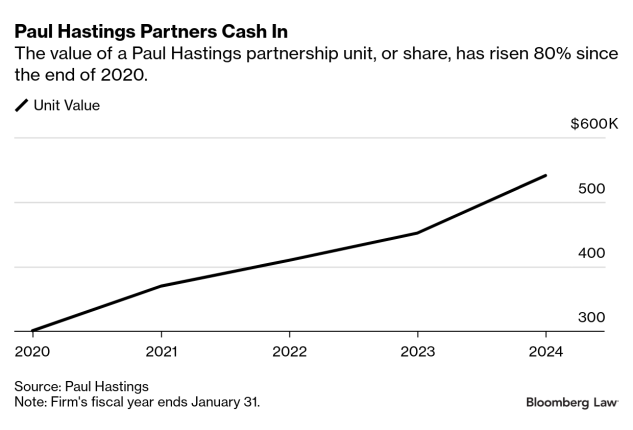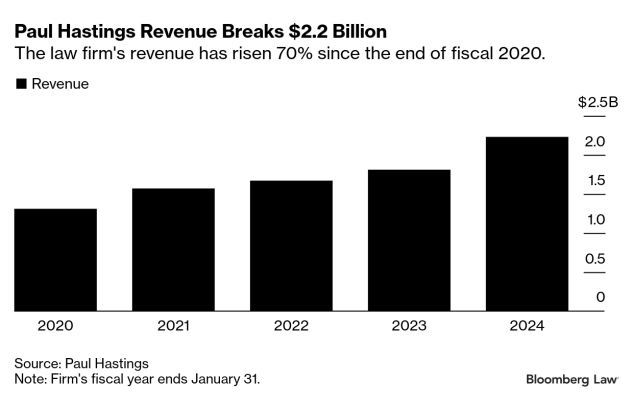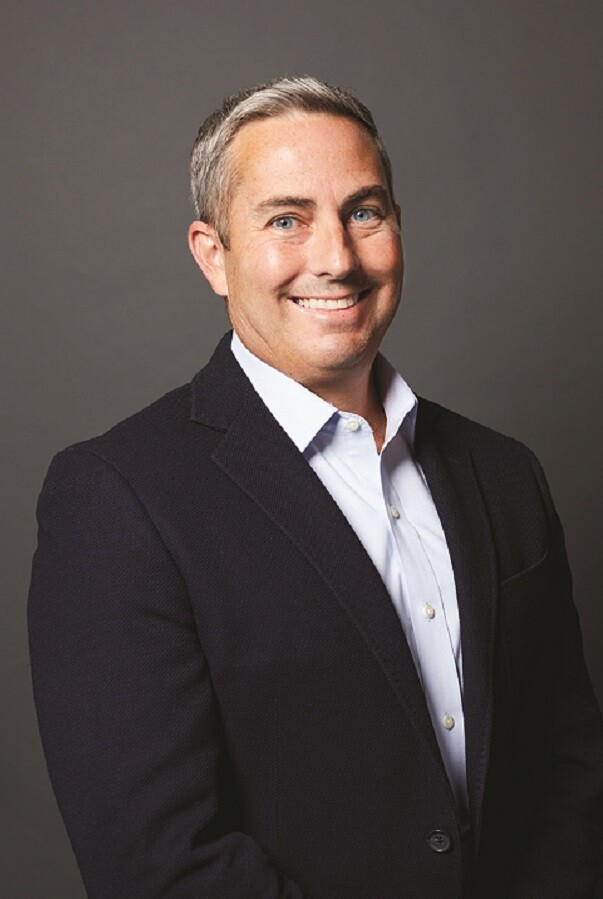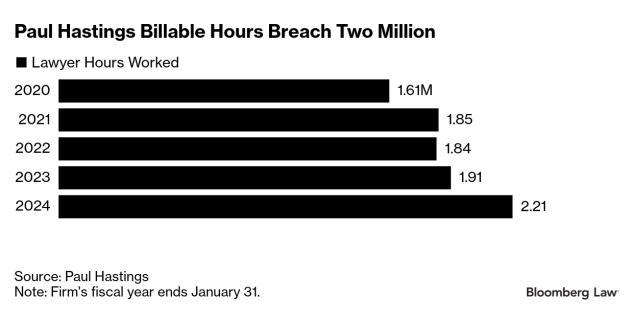- Paul Hastings hired 215 lawyers over year, second-most among big firms
- Partner shares value up 80% over four years, ‘instrumental’ to recruiting
Paul Hastings boosted revenue 22% to more than $2.2 billion last year and saw profits jump as the firm hired partners from rivals more aggressively than most peers.
The value of a firm partnership unit—referred to as shares or points at other firms and doled out to equity partners based on performance and seniority—rose roughly 20% to $541,000 during the firm’s last fiscal year, which ended January 31.
The figure is up 80% over the last four years, according to data provided by Paul Hastings. The increase highlights the firm’s hiring strategy and helps it lure more rival talent by offering top compensation, according to Chair Frank Lopez.
“It wasn’t just last year investing in lateral moves, it’s been a three-year build to the future,” Lopez said. “We’ve seen a strong success rate with our lateral groups coming in.”
The firm’s attorneys billed a record 2.21 million hours in 2024, up 15% from the prior year, it said.
Growth across Paul Hastings last year exceeded the averages of its peers, as reported by Wells Fargo’s legal banking group. The largest 50 law firms on average saw revenue climb by 14%, fueling a 19% rise in net income. Demand, or hours billed, rose 3.9% at those firms, Wells Fargo reported.
Taking market share from rivals in top practices such as private equity, mergers and acquisitions, finance, capital markets and restructuring drove the firm’s revenue and profit growth, Lopez said. The firm has hired more than 20 partners over the past two years in individual practices including private equity, finance, and capital markets.
The firm’s public company practice grew to 85 clients last year from 54 in 2023. Lopez attributed the boost to lateral hires bringing public company clients and also an increase in initial share offerings that create new public companies.
“Our lateral strategy has driven exponential demand growth across a very diversified practice and geographic mix,” he said.
Performance Drivers
The firm is broken into 17 major practices, and Lopez said 14 of those last year saw revenue increases of 10% or more. Paul Hastings had a “breakout year” in finance and structured credit, he said, while private equity, M&A, and capital markets saw “upticks” compared to a year ago.
Lopez, who’s directly involved in virtually every lateral hire, has tweaked his targets in recent years as the markets shifted. The firm focused in 2022 on adding countercyclical and “cycle-agnostic” practices, highlighted by a major restructuring team from Stroock & Stroock & Lavan. It also has hired more than 40 partners in its litigation practice over the past two years.
Paul Hastings more recently focused on capital markets, private equity, and M&A—preparing for those transactional practices to kick into high gear. The firm last year poached an 11-partner private credit and special situations team from King & Spalding and an eight-partner finance group from Vinson & Elkins.
The firm made 215 lawyer hires last year, according to Firm Prospects, which tracks law firm moves. That was second-most among the 50 largest law firms by revenue, trailing only Kirkland & Ellis.
“It was about putting seeds down to be in a different place in the pecking order when the transactions came back and the markets picked up,” Lopez said. “We’re starting to see, and we will continue to see, the benefit of that.”
In one example of the high-profile work the firm’s lateral partners have helped to land, Paul Hastings advised food packaging company Pactiv Evergreen in its $6.7 billion acquisition by Apollo Global Management Inc.-backed Novolex. Newer hires—from Gibson Dunn & Crutcher, Willkie Farr & Gallagher, and King & Spalding—led the work on the deal.
The firm in January advised pork producer Smithfield Foods Inc. in its initial public offering, which raised more than $500 million. Colin Diamond, who joined last year from White & Case, co-led the team.
The firm has continued to add partners this year, launching a new tech transactions practice led by Fried Frank’s former co-head of a similar group and picking up Los Angeles lawyer Sidney Fohrman from Willkie Farr & Gallagher to chair its music industry practice.
Profitability Matters
Paul Hastings’ four-year surge in the value of its partnership units has been key to attracting top talent from rivals.
The value of a partnership unit, or share, differs from the common industry metric of profits per equity partner. Partners accumulate shares that determine their ultimate compensation. Rising share values mean partner pay is increasing even if an individual partner doesn’t earn more shares from year to year.
Profits per equity partner is an accounting figure designed to compare relative profitability between law firms, but it becomes less reliable as the spread of pay between partners at individual firms increases—which has been the industry trend in recent years.
Lopez declined to comment on how much the top partners earn at Paul Hastings.
“Our financial results have been instrumental in our ability to retain and attract premier partners and teams in a very competitive market for talent at the top of the market,” he said.
The appreciation of unit or share value is a major consideration for partners, since it is a measure of the value of their stake in the firm. Lopez said that’s how partners judge the performance of potential suitors when considering a move.
“I’d put the results up against any other law firm,” he said.
To contact the reporter on this story:
To contact the editors responsible for this story:
Learn more about Bloomberg Law or Log In to keep reading:
See Breaking News in Context
Bloomberg Law provides trusted coverage of current events enhanced with legal analysis.
Already a subscriber?
Log in to keep reading or access research tools and resources.





